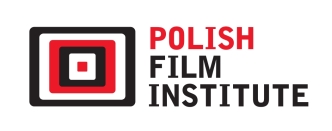On a Postmodern Highway. „Natural Born Killers” Years Later
Abstract
The article is devoted to narrative techniques used by Oliver Stone in Natural Born Killers (1994). The author describes how Stone undermines the convention of traditional road cinema and the scheme of initiation journey. In addition, Birkholc argues that the narrative of the film, full of intertextual, stylistic and genre references, is subjectively motivated by the “sensitivity” of the characters, which was shaped by neo-television. Stone uses a very special form of focalization, which is emphasizing the media mediation of the character’s consciousness and – thus – questioning the image of a free and independent subject. The contradictory strategy of the creator, trying to describe the fundamental cultural and social changes, makes the Natural Born Killers an extremely intriguing record of the ambivalent experience of American culture in the era of neo-television.
Keywords:
Oliver Stone, American cinema, road movies, focalization, neo-televisionReferences
Bal, Mieke, Narratologia. Wprowadzenie do teorii narracji. przekład zbiorowy, Kraków: Wydawnictwo Uniwersytetu Jagiellońskiego, 2012.
Google Scholar
Baudrillard, Jean. Ameryka. przeł. R. Lis, Warszawa: sic!, 2011.
Google Scholar
Birkholc, Robert. Podwójna perspektywa. O subiektywizacji zapośredniczonej w filmie. Kraków: Universitas, 2019.
Google Scholar
Campbell, Joseph. Bohater o tysiącu twarzy. przeł. A. Jankowski, Poznań: Zysk i S-ka, 1997.
Google Scholar
Casetti, Francesco; Odin, Roger. Od paleo- do neotelewizji. tłum. I. Ostaszewska, [w:] Po kinie? Audiowizualność w epoce przekaźników elektronicznych, red. A. Gwóźdź, Kraków: Universitas, 1994.
Google Scholar
Cirlot, Juan-Eduardo. Słownik symboli, tłum. I. Kania, Kraków: Znak, 2000.
Google Scholar
Cohan, Steven; Hark, Ina Rae. Introduction, [w:] The Road Movie Book. pod red. S. Cohana, I.R. Hark, Londyn/Nowy Jork: Routledge, 1997.
Google Scholar
Derrida, Jacques. Farmakon. przeł. K. Matuszewski, [w:] idem. Pismo filozofii. wyb. i przedm. B. Banasiak, Kraków: inter esse, 1993.
Google Scholar
Eliade, Mircea. Szamanizm i archaiczne techniki ekstazy. przeł. K. Kocjan, Warszawa: Wydawnictwo Naukowe PWN, 2011.
Google Scholar
Genette, Gérard, Narrative Discourse. An Essay in Method. tłum. Jane E. Lewin, Nowy Jork: Cornell University Press, 1980.
Google Scholar
Giddens, Anthony. Nowoczesność i tożsamość. przeł. A. Szulżycka, Warszawa: Wydawnictwo Naukowe PWN, 2012.
Google Scholar
Gwóźdź, Andrzej. Widz w tele-kinie. [w:] „Kultura Współczesna” 1994, nr 2.
Google Scholar
Klejsa, Konrad. Filmowe oblicza kontestacji: kino Stanów Zjednoczonych i Europy Zachodniej wobec kultury protestu przełomu lat sześćdziesiątych i siedemdziesiątych. Warszawa: Trio, 2008.
Google Scholar
Laderman, David. Driving Visions - Exploring the Road Movie. Austin: University of Texas Press, 2002.
DOI: https://doi.org/10.7560/747319
Google Scholar
Leong, Ian; Sell, Mike; Thomas, Kelly. Mad Love, Mobile Homes, and Dysfunctional Dicks. On the Road with Bonnie and Clyde, [w:] The Road Movie Book. pod red. S. Cohan, I.R. Hark, Londyn/Nowy Jork: Routledge, 1997.
Google Scholar
Manovich, Lev. Język nowych mediów. przeł. P. Cypryański, Warszawa: Wydaw. Akad. i Profesjonalne, 2006.
Google Scholar
Pizzello, Stephen, 'Natural Born Killers' Blasts Big Screen with Both Barrels. „American Cinematographer” 1994, nr 11 (75).
Google Scholar
Ryan, Michael; Kellner Douglas. Camera Politica: The Politics and Ideology of Contemporary Hollywood Cinema. Indiana: Indiana University Press, 1990.
Google Scholar
Schmid, David. Natural Born Celebrities. Serial Killers in American Culture. Chicago/Londyn: University of Chicago Press, 2006.
DOI: https://doi.org/10.7208/chicago/9780226738703.001.0001
Google Scholar
Thanouli, Eleftheria, Post-classical Cinema. An International Poetics of Film Narration. Londyn: Wallflower Press, 2009.
Google Scholar
Vogler, Christopher. Podróż autora. Struktury mityczne dla scenarzystów i pisarzy. przeł. K. Kosińska, Wojciech Marzec: Warszawa 2010.
Google Scholar
Authors
Robert Birkholcbeerek38@wp.pl
University of Warsaw Poland
https://orcid.org/0000-0002-5192-4997
Doktor nauk humanistycznych, pracownik Zakładu Komparatystyki Instytutu Literatury Polskiej Uniwersytetu Warszawskiego. Zajmuje się narratologią i komparatystyką intersemiotyczną. Publikował m.in. w „Roczniku Komparatystycznym”, „Kontekstach”, „Kwartalniku Filmowym”, „Studia Europaea Gnesnensia”, „Załączniku Kulturoznawczym”, „Kinie”, „Magazynie Filmowym SFP” oraz w serwisie internetowym Culture.pl. Współpracuje z projektem Edukacja Filmowa, w ramach którego pisze recenzje i analizy filmoznawcze dla nauczycieli. Autor książki Podwójna perspektywa. O subiektywizacji zapośredniczonej w filmie (2019), a także artykułów w pracach zbiorowych. Researcher w projekcie „Narra – narzędzie kompleksowo wspierające proces tworzenia fabuły w grach wideo”. Członek Zespołu Badań nad Filmem w Instytucie Kultury Polskiej Uniwersytetu Warszawskiego.
Statistics
Abstract views: 392PDF downloads: 502
License
Copyright (c) 2019 Kwartalnik Filmowy

This work is licensed under a Creative Commons Attribution-NonCommercial-NoDerivatives 4.0 International License.
The author grants the publisher a royalty-free non-exclusive licence (CC BY 4.0) to use the article in Kwartalnik Filmowy, retains full copyright, and agrees to identify the work as first having been published in Kwartalnik Filmowy should it be published or used again (download licence agreement). The journal is published under the CC BY 4.0 licence. By submitting an article, the author agrees to make it available under this licence.
In issues from 105-106 (2019) to 119 (2022) all articles were published under the CC BY-NC-ND 4.0 licence. During this period the authors granted a royalty-free non-exclusive licence (CC BY-ND 4.0) to use their article in „Kwartalnik Filmowy”, retained full copyright, and agreed to identify the work as first having been published in our journal should it be published or used again.
Most read articles by the same author(s)
- Robert Birkholc, Narration and Sensual Focalization in „Pod Mocnym Aniołem” by Wojciech Smarzowski. On the Adaptation of Jerzy Pilch’s Book , Kwartalnik Filmowy: No. 111 (2020): Senses and Affects
- Robert Birkholc, Contemporary Theories in Adaptation Studies: State of the Art and New Directions , Kwartalnik Filmowy: No. 119 (2022): (New) Film Theory
- Robert Birkholc, A Different Approach to the Language of the Cinema , Kwartalnik Filmowy: No. 107 (2019): Journey, (E)migration, Pilgrimage
- Robert Birkholc, Polish-Style Self-Reflexivity , Kwartalnik Filmowy: No. 119 (2022): (New) Film Theory
- Robert Birkholc, Seweryn Kuśmierczyk’s Journey Into the Depths of Polish Cinema , Kwartalnik Filmowy: No. 93-94 (2016): American Cinema











